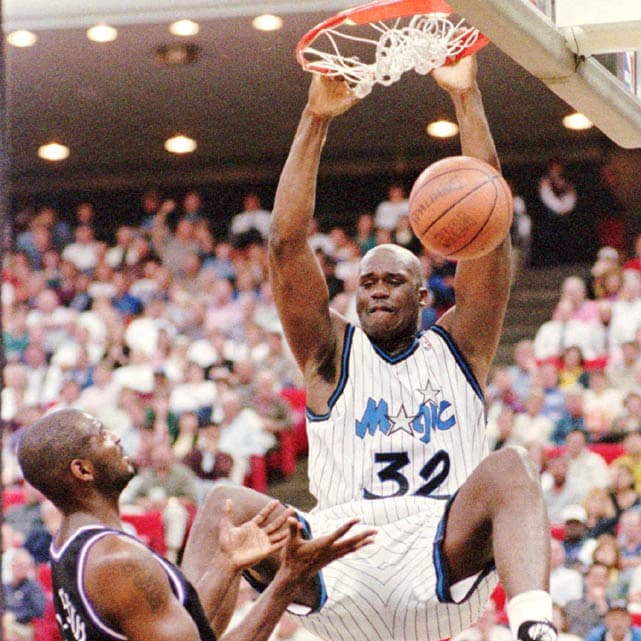-
(#2) Making The Statue of Liberty Disappear
The Trick:
On a live CBS special in 1983, David Copperfield did the impossible and made the Statue of Liberty disappear. The live audience, television crew, and stage are all on a large platform viewing the Statue of Liberty in the distance.
Also on the platform, framing the statue, are two scaffolds decorated in lights. Copperfield raised a curtain between the scaffolds to hide the statue and gave a short soliloquy on cherishing freedom. Then the curtain dropped, the lights flashed, and the Statue of Liberty was gone.
How It's Done:
The platform rotated. The vibrations of its movement were masked by loud music being pumped through speakers while Copperfield spoke over the noise.
When the curtain dropped, the platform had moved so the statue was blocked from view by one of the scaffolds. Its lights were turned on so bright that no one could see the statue behind them.
-
(#8) Floating Woman Trick
The Trick:
This particular levitation trick was popularized by magician Harry Kellar in the late 1800s and early 1900s. Variations exist, but the gist involves an assistant who lies across a board that is supported by two chairs and covered with a sheet. The assistant is then "mesmerized" and the chairs are removed, but the assistant remains floating. While they float, the magician passes a hoop over them to prove there are no wires.
How It's Done:
The board is attached to a metal rod that runs behind the magician. The rod is hidden from the audience's view by the magician's legs and attached to the board in an "S" shape that allows the hoop to pass through and be freed. In some instances of the trick, the rod can be moved up and down by buttons hidden in the platform and operated by the magician's feet.
-
(#9) Cup And Balls
The Trick:
The cups and balls trick has been performed by magicians and conjurers since the days of Ancient Greece.
The performer tells the audience they have three cups and three small balls. The three cups are set down in a line with three balls visible. One of the balls is put on top of the center cup and the other two cups are nested on top. The three cups are lifted, revealing the ball has "penetrated" the cup.
Variations of this are repeated, with the ball magically moving among the cups. Sometimes at the end, a ball will turn into a piece of fruit or something larger.
How It's Done:
There are four balls. The performer says there are three cups and three balls, but one of the cups already has the fourth ball hidden inside it. That cup is flipped over so when the cups are stacked and the ball is placed on top of the cup, the hidden fourth ball is revealed and appears to have penetrated the cup. Now a new hidden ball is on top to use for the next part of the trick.
Other variants, especially those with clear cups, rely more heavily on sleight of hand and hiding balls in pockets, sleeves, and hands.
-
(#11) Levitating Street Performer
The Trick:
The levitating street performer is an illusion in which a person appears to be floating above the street. Often, they will be clad in an elaborate costume evoking an unnamed mysticism. They will have flowing long sleeves, be sitting cross-legged above a rug or material of some sort, and one hand will be clutching a stick or pole.
This type of levitation trick is done in major cities all over the world by street performers and must account for a full view from all sides by the audience.
How It's Done:
The material on the ground hides a heavy base to which the pole is attached. A rod from the pole runs down the performer's sleeve and down their back to another base on which they sit.
-
(#1) Underwater Box Escape
The Trick:
Harry Houdini was a gifted magician who specialized in escape tricks. One of the most memorable was the underwater box escape. Houdini was handcuffed and climbed into a wooden crate that was then nailed, trussed, and chained shut. It was hoisted by a crane into New York's East River and sank. A few minutes later, Houdini would emerge, free of his bonds, at the water's surface.
How It's Done:
The crate was specially designed for this trick. It had small holes in it that allowed Houdini to easily breathe while he waited for the box to be nailed. The holes would also help the crate sink. The crate appeared to be held together by nails, but one of the sides of the square crate had two fake nail heads. That part of the crate was held shut by a hinge on the inside. Once Houdini was inside the crate and it was being lifted by the crane, he would take off the handcuffs (he kept hidden keys). After the crate hit the water and sank sufficiently, he would simply kick open the crate at the hidden hinge and swim to the surface.
-
(#6) Handcuff Escape
The Trick:
Handcuff acts were a popular genre for magicians and escape artists during vaudeville theater. This was where Harry Houdini first rose to prominence as the "Handcuff King," an escape artist who could not be held by any pair of cuffs.
The magician would be handcuffed and then escape from their bonds in front of the audience. Often this act would be part of a touring show, and the local police or a locksmith who was particularly proud of their design would provide the handcuffs.
How It's Done:
Just as there are many types of locks, there are many ways to escape them. The most common way is that the magician has a key.
Houdini had a "remarkable knowledge of locks and locking devices." He collected and studied locks all of his life and remembered how each type worked and could be opened. Houdini studied the handcuffs of police and locksmiths of the towns he was about to visit. Any particularly unique keys he would ask to see first and pocket, replacing them with a similar-looking key until after the trick.
During the trick, Houdini would conceal the keys in secret pockets or a bag strapped to his leg. Later, he built a belt that contained keys and tools for the cuffs, which ran on tiny ball bearings that revolved by pressure from his arm.
New Random Displays Display All By Ranking
About This Tool
Our data comes from Ranker, If you want to participate in the ranking of items displayed on this page, please click here.












